Articles on brewing and opening a brewery

Brewery Floorplan Drawings
The following brewery floor plan drawings have been shared by several of our successful brewery customers. While each location and budget will create unique requirements, these shared drawings are meant...
Brewery Floorplan Drawings
The following brewery floor plan drawings have been shared by several of our successful brewery customers. While each location and budget will create unique requirements, these shared drawings are meant...

Installation and Use of the Plate Chiller When ...
Installation and use of the plate chiller with the 5-in-1 fermenter BREWHA 5-in-1 product pageBREWHA Plate Chiller product pageBREWHA Cold Liquor Tank product page Steps to install and use...
Installation and Use of the Plate Chiller When ...
Installation and use of the plate chiller with the 5-in-1 fermenter BREWHA 5-in-1 product pageBREWHA Plate Chiller product pageBREWHA Cold Liquor Tank product page Steps to install and use...

Brewery Assembly and Install Instructions
In this video we will be setting up the BREWHA BIAC beer brewing system in 12 simple steps. The BIAC includes one fermenter so for customers with multiple BREWHA fermenters, the...
Brewery Assembly and Install Instructions
In this video we will be setting up the BREWHA BIAC beer brewing system in 12 simple steps. The BIAC includes one fermenter so for customers with multiple BREWHA fermenters, the...

How to Carbonate Beer in the BREWHA Fermenter
The BREWHA 4-in-1 fermenters are designed to withstand up to 14.9psi of pressure. This is enough pressure to fully carbonate beer, and once carbonated, it is ready to serve. The...
How to Carbonate Beer in the BREWHA Fermenter
The BREWHA 4-in-1 fermenters are designed to withstand up to 14.9psi of pressure. This is enough pressure to fully carbonate beer, and once carbonated, it is ready to serve. The...

How to Effectively Clean Electric Heating Elements
Cleaning beer brewing elements is not difficult, especially with the BREWHA system where an element can be easily removed from the vessel simply be removing the clamp that holds it in place. Once...
How to Effectively Clean Electric Heating Elements
Cleaning beer brewing elements is not difficult, especially with the BREWHA system where an element can be easily removed from the vessel simply be removing the clamp that holds it in place. Once...
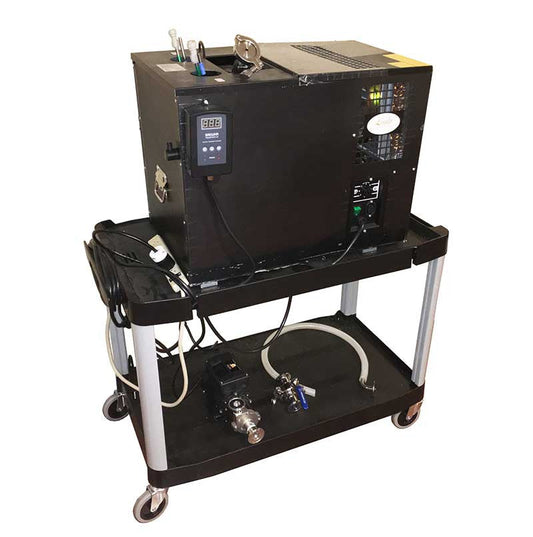
Installing a Portable Fermentation Temperature ...
For most styles of beer, a chilling system is important for producing a great tasting beverage. In fact, aside from proper sanitation, temperature control is arguably the single most important criteria for...
Installing a Portable Fermentation Temperature ...
For most styles of beer, a chilling system is important for producing a great tasting beverage. In fact, aside from proper sanitation, temperature control is arguably the single most important criteria for...

Securing Sanitary Clamps Against Accidental Loo...
A customer recently informed us that some friends (who were new to brewing) had loosened one of the sanitary clamps on the 'wrong' (that is, nearest to the fermenter) side of the valve....
Securing Sanitary Clamps Against Accidental Loo...
A customer recently informed us that some friends (who were new to brewing) had loosened one of the sanitary clamps on the 'wrong' (that is, nearest to the fermenter) side of the valve....

Installing the Fermenter Lid Gasket
All models of the BREWHA 3-in-1 fermenter have a silicone lid gasket for sealing the lid and providing up to 3psi of pressure for racking beer into kegs. If the lid...
Installing the Fermenter Lid Gasket
All models of the BREWHA 3-in-1 fermenter have a silicone lid gasket for sealing the lid and providing up to 3psi of pressure for racking beer into kegs. If the lid...
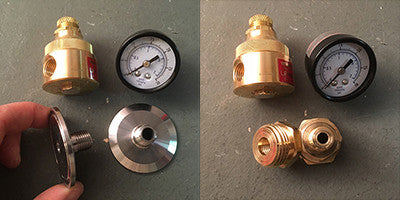
Assembling the Water Pressure Reducing Valve
Every hose and tank is designed with a maximum allowable working pressure (MAWP), which if exceeded, will cause damage and could even pose a safety hazard. The BREWHA tank jackets...
Assembling the Water Pressure Reducing Valve
Every hose and tank is designed with a maximum allowable working pressure (MAWP), which if exceeded, will cause damage and could even pose a safety hazard. The BREWHA tank jackets...
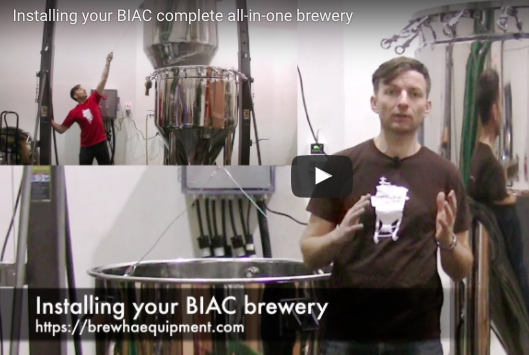
Installing Your BIAC Complete All-in-One Brewery
In this video we will be looking at how to setup the BREWHA BIAC. While today we are setting up a 5 barrel BIAC, most of the features and fittings...
Installing Your BIAC Complete All-in-One Brewery
In this video we will be looking at how to setup the BREWHA BIAC. While today we are setting up a 5 barrel BIAC, most of the features and fittings...

Disassembling the BREWHA Sanitary Ball Valve
Completely disassembling a valve to remove any sediment that is trapped inside is essential sanitary technique for any brewery. The BREWHA Sanitary Valve is the simplest and easiest valve you’ll...
Disassembling the BREWHA Sanitary Ball Valve
Completely disassembling a valve to remove any sediment that is trapped inside is essential sanitary technique for any brewery. The BREWHA Sanitary Valve is the simplest and easiest valve you’ll...

How to Assemble the BREWHA BIAC
Assembly of the BIAC is relatively intuitive and straightforward and can be assembled and ready to brew in less than 30 minutes. A brewer may want to substitute or alter...
How to Assemble the BREWHA BIAC
Assembly of the BIAC is relatively intuitive and straightforward and can be assembled and ready to brew in less than 30 minutes. A brewer may want to substitute or alter...
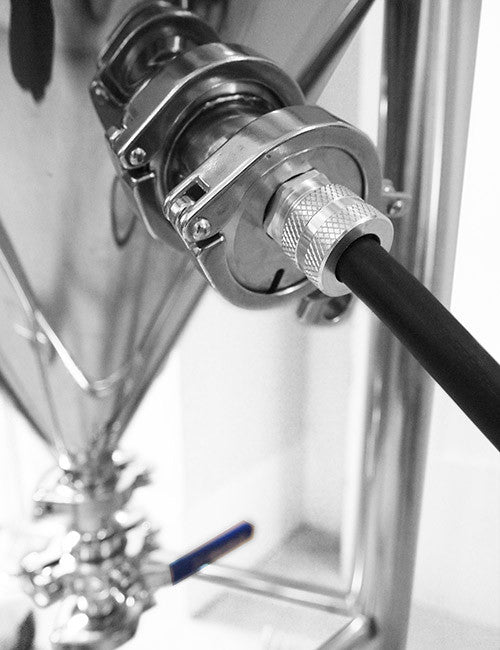
Installing the BREWHA 100% Stainless Heating El...
The new Water Heating Element from BREWHA comes with the following features: pre-installed and ready to use; no wiring, heat-shrinking, sealing threads or drilling required (Click to read more)
Installing the BREWHA 100% Stainless Heating El...
The new Water Heating Element from BREWHA comes with the following features: pre-installed and ready to use; no wiring, heat-shrinking, sealing threads or drilling required (Click to read more)
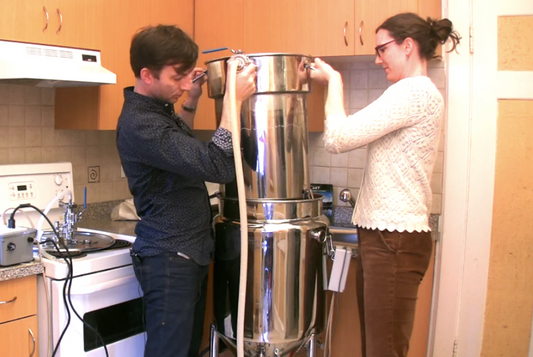
Lifting the Mash Colander out of the BIAC ferme...
In the BIAC method of brewing, after mashing, the Mash Colander is lifted out of the 3-in-1 in order to complete vorlauf (clear any sediment out of the wort by pumping it out...
Lifting the Mash Colander out of the BIAC ferme...
In the BIAC method of brewing, after mashing, the Mash Colander is lifted out of the 3-in-1 in order to complete vorlauf (clear any sediment out of the wort by pumping it out...

Operating the 240V/30amp Tabletop Brewing Power...
The 240V Brewing Power Controller (BPC) is designed to give safe and easy access to 240V/30amp power in the home. Without it, one would either have to use 120V power or...
Operating the 240V/30amp Tabletop Brewing Power...
The 240V Brewing Power Controller (BPC) is designed to give safe and easy access to 240V/30amp power in the home. Without it, one would either have to use 120V power or...